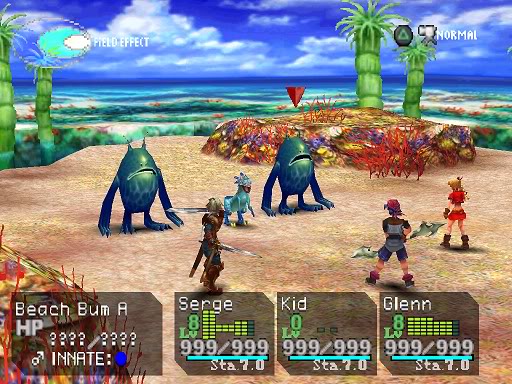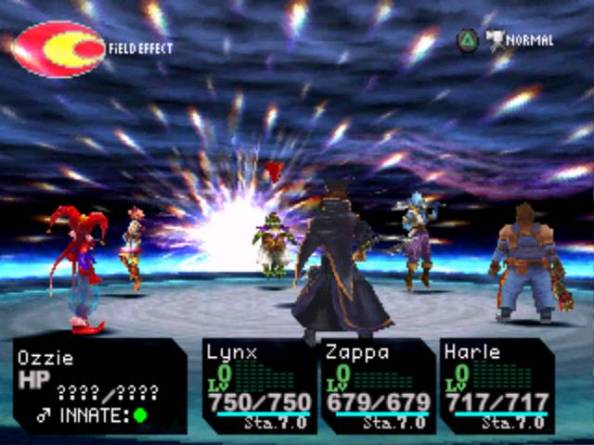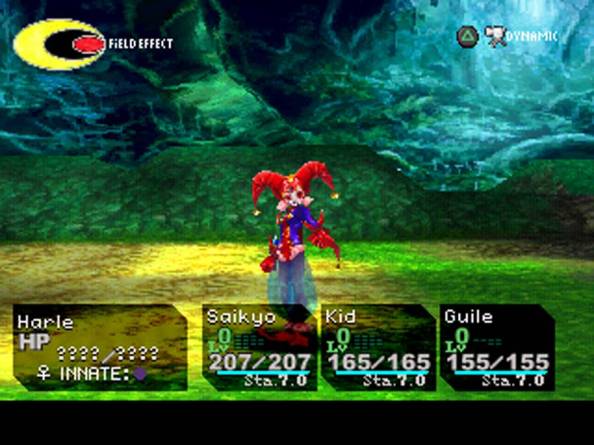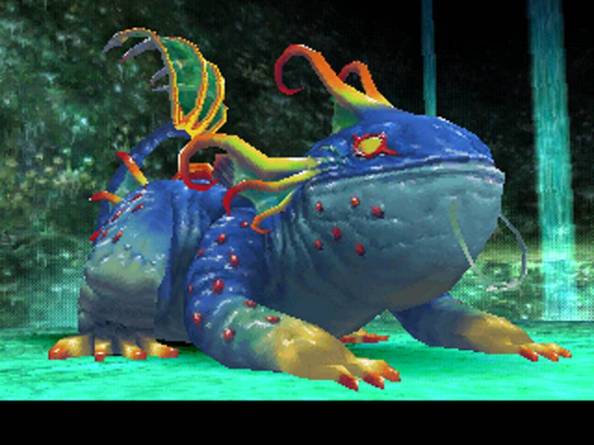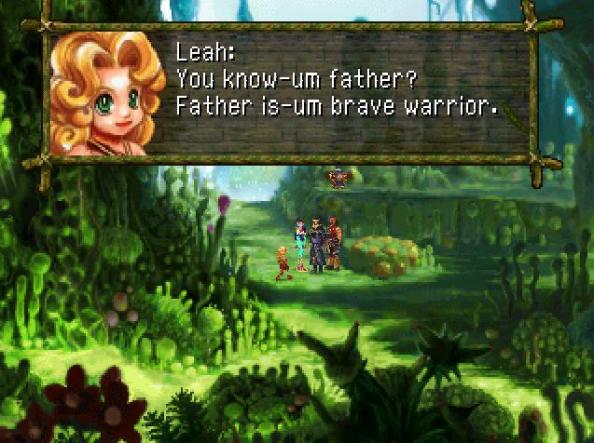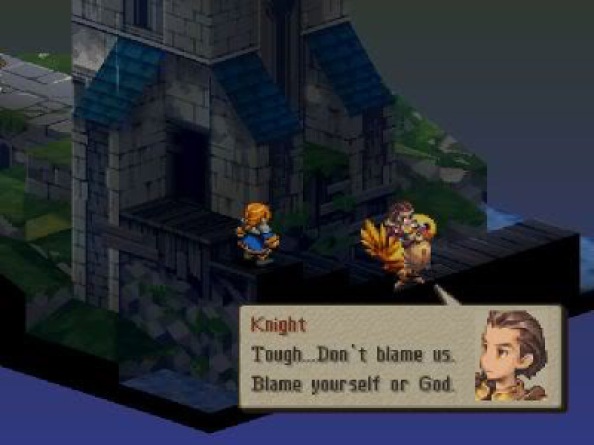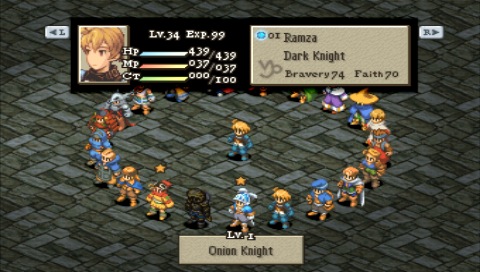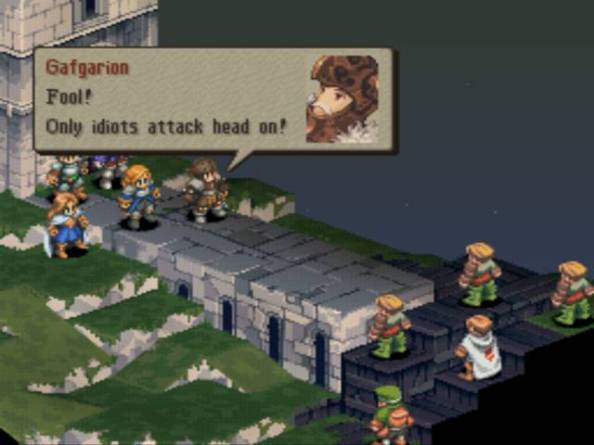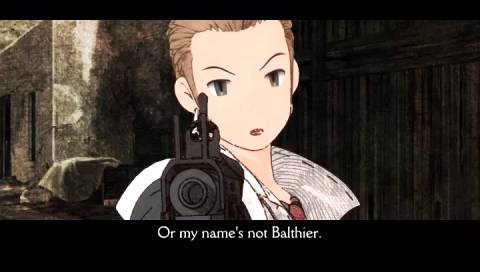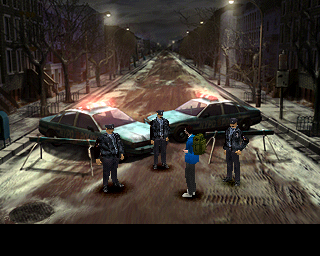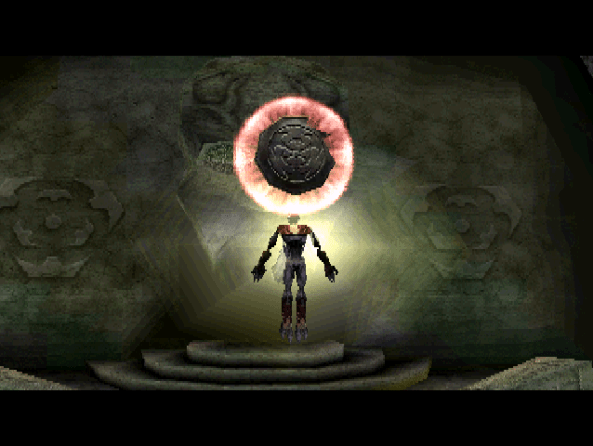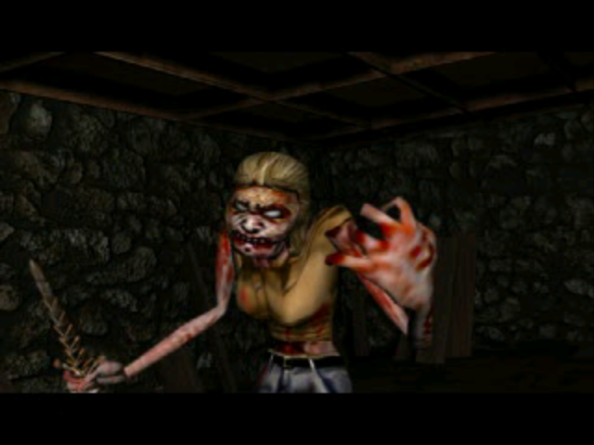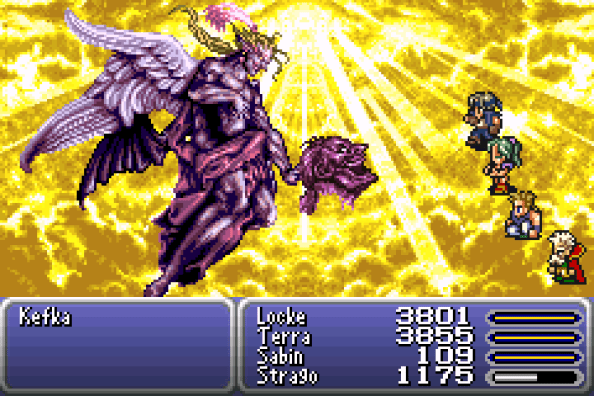
The original Insane Clown Posse
Like most people over the age of thirty–at least, those who play video games–Super Mario Bros hooked me. I took one dose, one afternoon at a friend’s house, and that spiraled into a life-long addiction and tens of thousands of dollars I had to scrounge up and commit to feeding my problem. But Mario only acted as a gateway drug. I didn’t really settle into a specific class…er, genre…until the early nineties, when my cousins, on their annual visit to Northern Michigan, brought their Super Nintendo with them along with a little unheard of gem called “Final Fantasy VI.” Er…Final Fantasy III. Whatever. The one with Terra and the espers. I didn’t realize that Square had raised the bar on RPGs forever with this game. I just knew I could play it over and over until the chocobos come home. So, like those in my age range, FFVI became the standard against which I will judge all other RPGs. But how, pray tell, does it stack up as a game by itself?
Well, it turns out that when you use a game as a standard to measure itself, it comes out rather well. In fact, I couldn’t find anything in which it failed to perform. There. End of article. I can’t remember having an easier time reviewing a game! But…I suppose for the sake of filling out some reading material, I should elaborate.

1/1200 of nothing! Give me the next two minutes of my life back!
Final Fantasy VI follows a long-term trend in FF games to update technology and streamline design until eventually they’ll have as much in common with the fantasy genre as “The Jetsons,” and instead of riding around on flying boats like in FFIV, the characters will travel on the S.S. Enterprise or the Millennium Falcon. Wait…what? Anyway, FFVI falls in a steampunk-ish world where a power-hungry emperor has discovered the lost power of magic and couldn’t think of any better use for it than building mech armor that protects everything from the waist down, leaving all the soft, vital organs exposed to the swords, lances, and crossbows used by the rebels. Coming out of a magical apocalypse, scholars warn the emperor about using magic, as it might repeat the global destruction from a millennium ago. This makes as much sense as a comet passing over the White House and calling off the raid on Osama bin Laden because we don’t want to repeat the horrible tragedy at the Battle of Hastings.
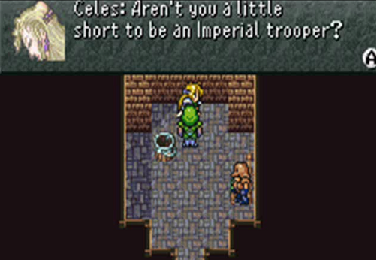
Just slowly replace the entire script with Star Wars references, and pretty soon you’ll have a game as popular as Star Wars.
Anyway, the Empire uses Terra, a half-human, half-esper, half-protagonist, for her innate magical power. Then the Returners, a group of rebels, rescues her and hopes to use her for her innate magical power. But we don’t mind, because the Empire used a mind-control device to enslave her, whereas the Returners just used good, old fashioned, natural guilt. Because Tolkien taught us that kings always have our best interests at heart, while Star Wars shows us that emperors only want to blow up our planets and strike us dead with lightning. The Empire wages war to collect magic and subdue nations until the Emperor’s “court mage,” Kefka decides to destroy the world and rule the rubble heap as a god. The heroes rush to stop him. Then they lose. Failing to avert the apocalypse, the second act of the game takes off in a non-linear direction in which the player must find all the lost characters, then hunt down side quests that give them each a reason for living.
This game, as I’ve mentioned, defines “good RPG” for me. The story provides fourteen fully unique characters, each with a single unique special skill. Except for two, none of them learn magic naturally or in a pre-programmed order. All spells are taught by equipping magicite (the petrified corpses of fairy-tale monsters, the Espers) in whatever configuration or order the player chooses. Each character has a certain configuration of base stats, suggesting a use for the character (The old mage, Strago, has higher magic power than physical power, while if you try to teach magic to your ninja, Shadow, you’ll find he has about as much aptitude for casting as a one-armed, epileptic fly fisherman…so about the same as every other ninja that Square tried to improve by giving low-level black magic powers), but magicite often grants stat bonuses when a character levels up, so the player can also customize these. I’ve only played two RPGs that have better character customization mechanics than FFVI: Final Fantasy V and Final Fantasy Tactics. So with all these fabulously creative systems, naturally Square moved on to FFVII, where you forge your characters with as much care as it takes to put books on a shelf, and who have all the unique features of an NES with a sticker on the top.

So I know we have to fight an epic battle to save all of existence in about three minutes, but this seems like the best time to tell Relm I’m her father.
So when I joked about comparing FFVI to itself earlier, I may have lied somewhat, as it actually does exceed the standards it set. While the SNES version reigns supreme in the hearts of those who played it, I actually recommend playing the Game Boy Advanced version, which gives the game an upgrade akin to using a chainsaw to cut down a tree instead of a pocket knife. While Ted Woolsey’s original translation may have won the hearts and minds of 14-year-old boys who listened to the Pimsleur Japanese free sample so they can criticize the subtitles of Sailor Moon episodes, the GBA translation reads as though people actually speak the language used in the story. It corrects mistakes such as “Lete River,” “Fenix Down” and “Gradius” (Lethe, Phoenix, and Gladius), it allows Cyan and Doma to exercise a Japanese culture rather than bleaching them whiter than a Disney Princess, and it un-censors a lot of the original story. It also turns some of Woolsey’s garbled nonsense into meaningful dialog. “This kid’s loaded for bear” now reads as “When you showed up, I thought you were one of Vargas’s bears.” (After which, the game humorously speculates on Sabin’s sexual orientation.) Furthermore, Shadow, who learns of his relationship with Relm through a series of dreams, no longer drops that bomb on her just before the final battle, instead suggesting it more subtly.

Look away children! The Goddess statue will steal your soul way if you see her without those extra blue pixels covering her legs!
This most recent playthrough, I decided to watch Star Trek on Netflix while I worked on some side quests. In easily the weirdest moment I’ve ever had playing video games, I look up from FFVI to hear Kirk talking about espers. The term “esper” refers to someone with the ability to practice ESP at will. That, I suppose, clarifies the connection with magical monsters about as well as a six-year-old with cholera clarifies a public swimming pool.

This…might take a little more strategy than “Stick him with the pointy end.”
While the second act glorifies non-linear side quests, RPGs always contain the flaw of running out of stuff to do as soon as all the highest-level weapons, armor and magic becomes available. Like the other GBA ports of the SNES FF games, FFVI adds bonus dungeons to the end. The major dungeon, the Dragon’s Den, resurrects the eight dragons, presumably with a mixture of phoenix down, high doses of caffeine, and anabolic steroids. After making your way past these new challenges, you fight the Kaiser dragon. With even a moderate attention toward leveling up, the game’s final boss will drop faster than a politician’s pants in a truck stop bathroom, and I have literally destroyed him in a single attack on more than one occasion. The Kaiser dragon, on the other hand, puts up more of a fight than a triple-amputee undergoing chemotherapy, so his addition not once, but twice, spruces up gameplay by a healthy amount. He appears a second time in the other bonus dungeon, a 100-battle fight through various enemies and bosses encountered throughout the game.

Also, nostalgic lenses can successfully make the Three Stooges funny.
Yes, I’ll fully admit I may see the game through nostalgic lenses, an unfortunate pair of glasses that look back on high school without the crippling social anxiety or need for anti-depressants, but I’ll also gladly confess to all the standard RPG schlock that comes along with the package. For instance, disposable tents (“I put it up, damn it! What more do you want? You don’t actually expect we’ll need to heal or sleep ever again, do you?”), a comically large cast, thus ensuring you spend half the game trying to decide which four characters to put in your party and denying any of them a significantly flushed out back story and personality, and some carelessly written scenarios, in which the game wants us to question the loyalties of a character who never even hints at ulterior motives, at one point having Kefka place a sword in her hands. At that point, expecting her to do anything but stab him with it would make less sense than dumping a pizza on your lawn every night and expecting the raccoons to not build tiny condominiums under your deck.
This most recent playthrough, I decided to watch Star Trek on Netflix while I worked on some side quests. In easily the weirdest moment I’ve ever had playing video games, I look up from FFVI to hear Kirk talking about espers. The term “esper” refers to someone with the ability to practice ESP at will. That, I suppose, clarifies the connection with magical monsters about as well as a six-year-old with cholera clarifies a public swimming pool.
With extra weapons, armor, espers, spells, and dungeons, plus with a translation that suggests at least one person on the development staff spoke more than one language, the GBA version clearly surpasses the original. However, even the original holds high standards that many games developed recently still fail to live up to. Square filled FFVI with as many options for customizing characters and exploring the worlds as possible, as well as a level of detail and culture into their world that gives even the post-apocalyptic landscape a more appealing atmosphere than our car-exhaust-choked Earth. If you happen to fall into an age range that didn’t hit this game’s popularity at its peak, go out and find a copy. You shouldn’t have trouble; they ported it to just about every system imaginable. Why? Well…I guess the more ports they make, the easier they can hide from the fact that THEY STILL HAVE NO PLANS FOR A 3D REMAKE!! Get your act together Squeenix!
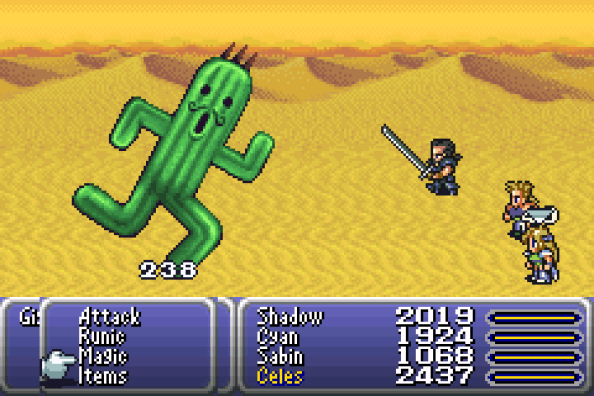
And just for fun, let’s add in some cactus juice. Only mildly hallucinogenic!
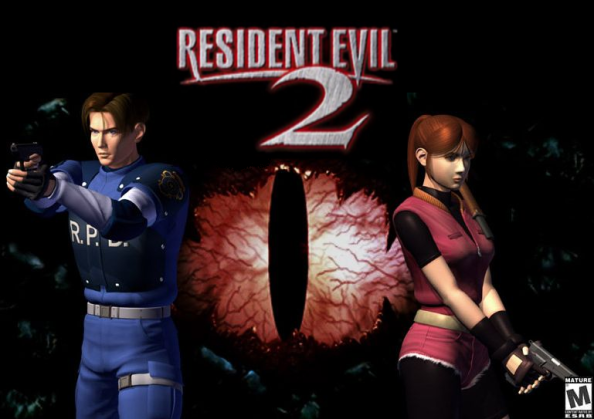

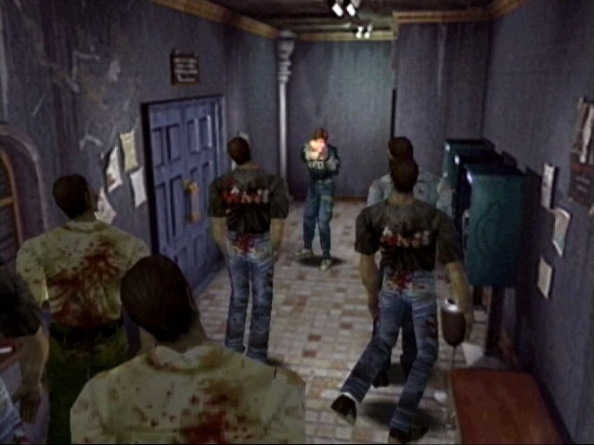


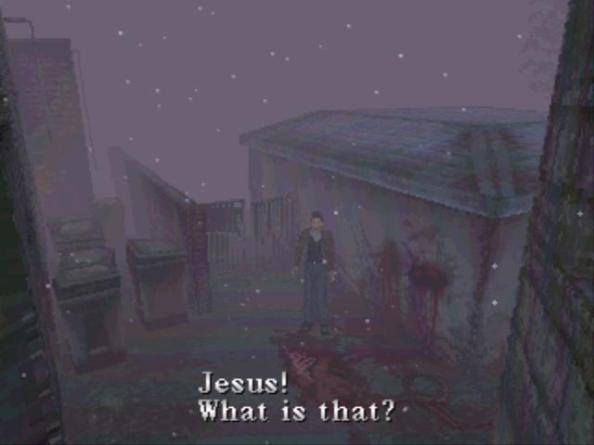
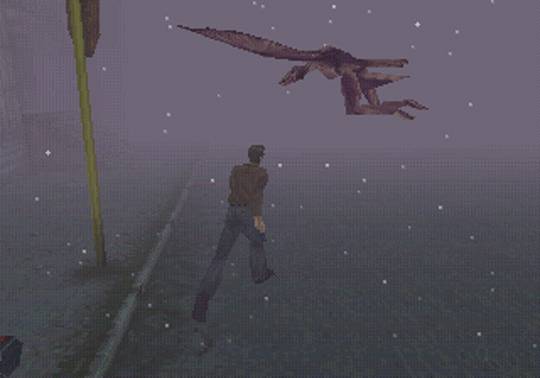

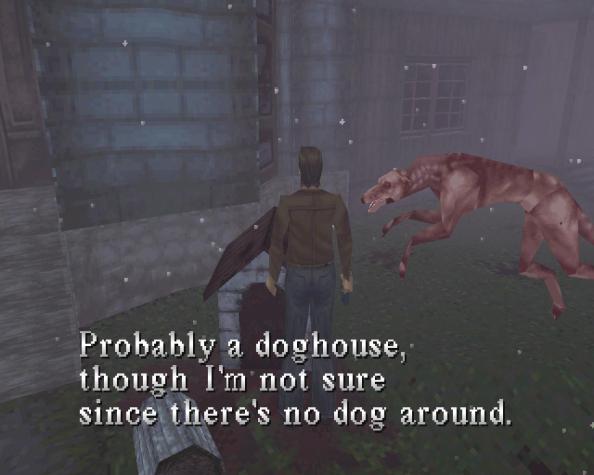
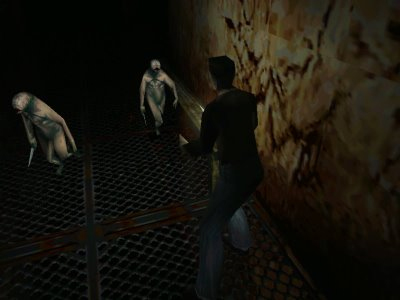
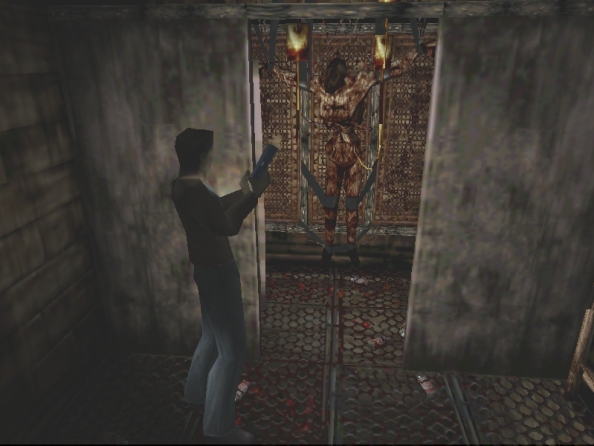
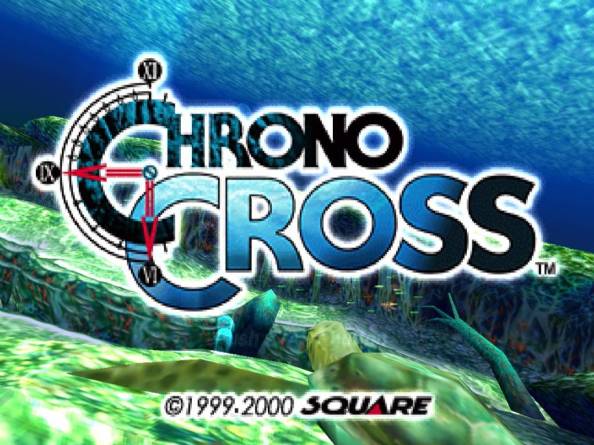 I’ve reviewed enough games by now that I’m convinced Shigeru Miyamoto is the only game developer on the planet who actually knows how to make a game, and that all other successful games get it right purely by accident. I envision the industry like a Looney Tunes episode, where developers just blunder through a hazardous landscape of booby traps, stepping in just the right spots to avoid the poisoned arrows, leap over the crocodile pit, and dodge the falling anvil to let it fall on the villain’s comically inept henchman. And then we get Chrono Trigger. But having paid close attention for three years, always looking for something absurd to criticize, I feel like I’ve started to notice every corpse with an anvil for a head and every crocodile picking his teeth with the wire frames of eyeglasses.
I’ve reviewed enough games by now that I’m convinced Shigeru Miyamoto is the only game developer on the planet who actually knows how to make a game, and that all other successful games get it right purely by accident. I envision the industry like a Looney Tunes episode, where developers just blunder through a hazardous landscape of booby traps, stepping in just the right spots to avoid the poisoned arrows, leap over the crocodile pit, and dodge the falling anvil to let it fall on the villain’s comically inept henchman. And then we get Chrono Trigger. But having paid close attention for three years, always looking for something absurd to criticize, I feel like I’ve started to notice every corpse with an anvil for a head and every crocodile picking his teeth with the wire frames of eyeglasses.